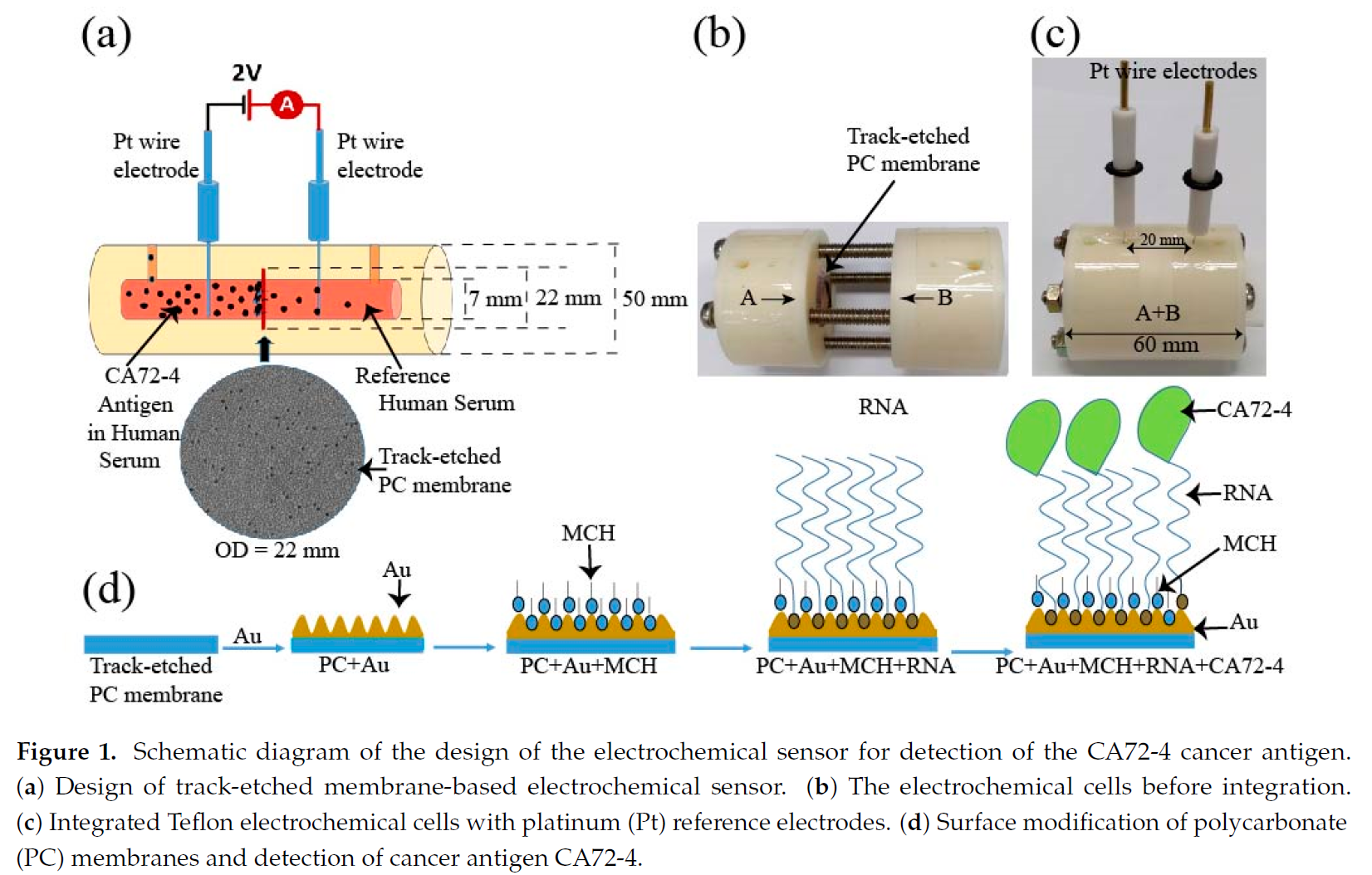

Opportunity
Early detection and diagnosis of cancer significantly increase the probability of successful cure and quality of life for patients. It is, therefore, of great importance to develop cancer detection tools. In clinic, detection of cancer tumors is usually performed by collecting and analyzing biomarkers, which are molecules released by malignant tumors into the blood, urine, or body tissues. Numerous protein and gene-based biomarkers have already been used for cancer detection. For example, cancer antigen CA 74-2 is a high-molecular-weight glycosylated protein produced by tumors, which is considered to be the main indicator for gastric cancer owing to its higher sensitivity. Hence, monitoring the CA72-4 level in serum can be a valuable tool for clinical diagnosis of gastric carcinoma and evaluation of the subsequent cancer therapy.
Technology
The present technology relates to a novel sensor made from a polycarbonate (PC) membrane with nanopores, followed by sequence-specific Oligo RNA modification for early gastric carcinoma diagnosis. In this design, the gastric cancer antigen CA72-4 is specifically conjugated to the Oligo RNA, thereby inhibiting the electrical current through the PC membrane in a concentration-dependent manner. The device can determine the concentration of cancer antigen CA72-4 for gastric carcinoma diagnosis in the range from 4 to 14 U/mL, possessing a sensitivity of 7.029 µAU−1mLcm−2 with a linear regression (R2) of 0.965 and a lower detection limit of 4 U/mL. This device has integrated advantages including high specificity and sensitivity and being simple, portable, and cost effective, which collectively enables a giant leap for cancer screening technologies towards clinical use.
Advantages
- The method for early gastric carcinoma diagnosis is highly sensitivie and low detection limit
- The detection device is easy-to-use, portable and cost effective
Applications
- Great potential of using aptamers for early diagnosis of cancer in clinic.




